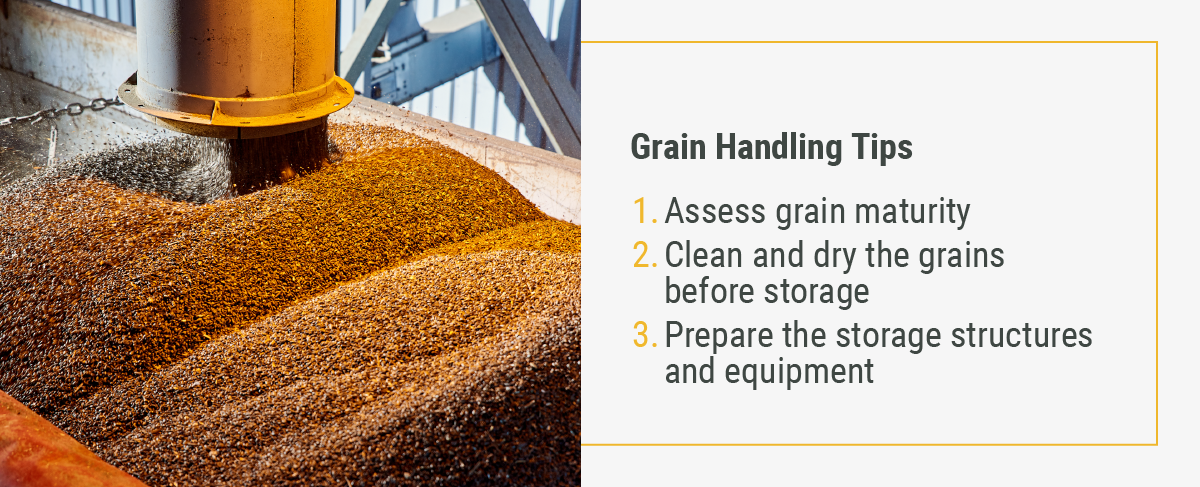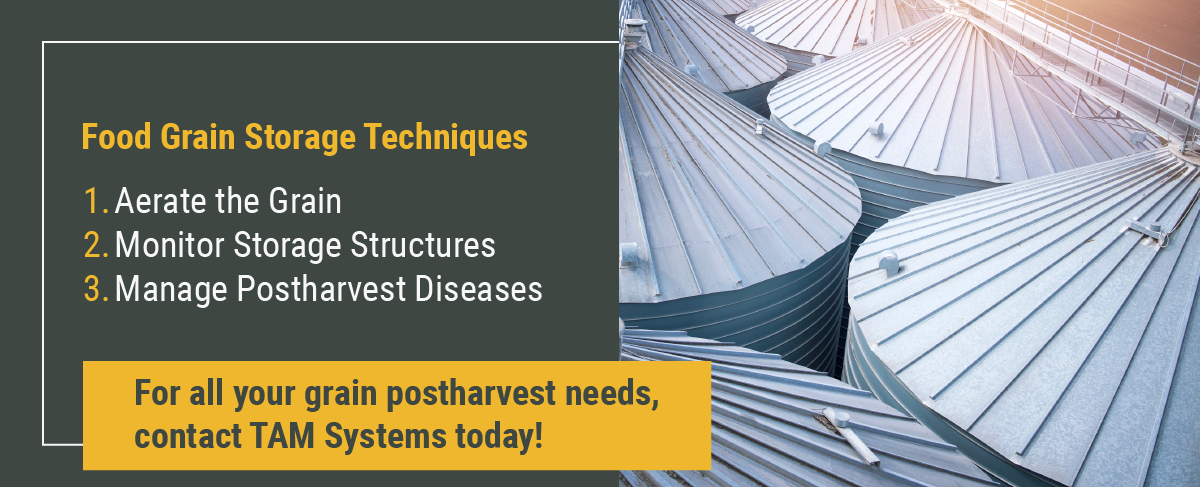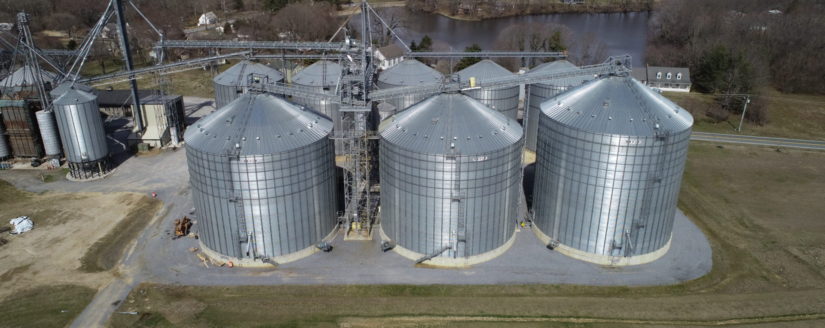While farmers spend a good portion of energy ensuring the successful growth of crops, they become busier during postharvest. They must manage their time, resources and crops wisely so the harvest lasts and reaches the market and customers.
Whether you grow grains like corn, soybeans or wheat, you can reduce postharvest losses with an effective management plan. Learn about the importance of using postharvest technology to prevent losses during harvesting and postharvest activities.
Types of Grain Storage Structures
Much of postharvest management includes storing grain so there’s enough inventory for selling on the market throughout the year. Before farmers begin harvesting and managing postharvest, they must understand the types of grain storage structures they can use to keep the crops safely stored. Here are some popular grain storage structures farmers use:
Silos
When you think of crop storage, silos are often the first structure that pops into your mind. Farmers who need to store in bulk may use silos to keep their grains dry. Traditional silos are tall, cylindrical structures that can hold large capacities and help lower storage losses.
Bins
Grain and hopper bins are two ways to store dry grain. Some farmers may choose traditional grain bins — wide containers with a flat bottom made of corrugated steel. Traditional bins may sometimes be mistaken for silos, but the latter is often taller and narrower. Grain bins are a great structure to store dry grains all year, especially when there’s a lot of unpredictable weather in your area.
Farmers can experience several benefits using grain bins. Using the structure for storage lets farmers have early harvest seasons and longer harvest times throughout the day.
Other storage structures include hopper bins. They are similar to grain bins but specifically engineered to hold grain, seeds or coal. Hopper bins are durable, V-shaped containers that provide storage with controlled unloading capabilities. Their functional purposes combined with storage make them an appealing choice for grain storage.
Bunkers
Bunkers are a different type of silo farmers use to store grains. Instead of storing grains in a vertical structure, farmers can use bunkers. Some bunkers provide quick and temporary storage solutions when other storage structures may not be available. Bunkers are set up according to the capacity required and can move locations when farmers need them.

Grain Handling Tips
Soon after harvesting, farmers must decide if they want to immediately sell their produce or store the crops for later selling. How farmers handle grain during postharvest management depends on their decision. When storing grain and other crops, farmers and workers need to understand the basics of handling grain safely and properly. Using special techniques and taking careful measures when handling grain is critical because postharvest directly affects the crop yield for the season.
Here are some grain handling tips to ensure a safe postharvest and avoid significant losses:
1. Assess Grain Maturity
The first step in postharvest handling is determining if the grain is ready for harvest. Grain needs to be mature to provide the best quality once it hits the market. Ensure any workers picking your grain understand how to evaluate its maturity so they pick crops at the appropriate stage.
2. Clean and Dry the Grains Before Storage
Grains need cleaning and drying before being put in storage. Properly cleaning grains ensures any small materials that linger and attract insects are gone. Removing the small materials helps create a better airflow during storage and leads to less moisture building in the storage structure.
Drying grain before storage is also vital. Too much moisture in grains can encourage fungus growth and begin deteriorating the grain quality. The moisture content you can leave in grain depends on what type you grow. For instance, you can store corn at 13-15% moisture, depending on how long you plan to store the crop.
3. Prepare the Storage Structures and Equipment
Before putting grain in storage structures, it’s vital to sanitize the structures, surrounding areas and grain handling equipment. Leftover grain and unnecessary grain residue from previous harvests can attract insect infestations and grow moldy when the weather gets warmer. The best time to clean and sanitize everything is during the spring or immediately after emptying the structures. By ensuring a clean environment for new grain, you can avoid contamination.

Food Grain Storage Techniques
Once harvesting is complete, you want to store grain in the structures with optimal conditions. Postharvest technology ensures grain after harvest has proper protection during storage and is ready for processing and packaging before hitting the market. Here are a few food grain storage techniques you can use to keep grains fresh:
1. Aerate the Grain
Aeration is a critical part of storing grain because it controls the grain’s temperature. When the seasons change, aeration is a technique used to cool grain in the fall or warm it in the spring. Using aeration helps grain be less subject to insect reproduction and mold growth.
2. Monitor Storage Structures
Once you have your storage structures full, it’s critical to monitor the grain frequently. The quality of grain depends on the conditions it’s experiencing, so you want to ensure the temperature and moisture stay stable. When you check your grain regularly, you can spot any insect or mold issues and take quick action to stop the spread.
3. Manage Postharvest Diseases
Having the proper knowledge of what to do in case of postharvest disease is critical to reducing losses. Infections can occur when insects infest the storage unit or mold and fungi begin growing. If your grain becomes infected with postharvest diseases like mycotoxin contamination, finding solutions is vital to reduce losses. Ensuring proper storage conditions can play a critical role in postharvest disease management and preventing grain loss.
Contact TAM Systems for the Tools You Need
When harvesting is complete and you enter the postharvest stage, ensure you understand the techniques and procedures for handling perishable crops. You can prevent significant postharvest losses by handling grain properly, using grain storage structures and taking advantage of storage techniques that keep your grains fresh and safe.
TAM Systems can help you streamline grain harvesting and postharvest production. With many options for on-farm grain storage, drying and conveying systems, TAM Systems helps farmers get the job done. Many of our employees are farmers, so we know the frustrations small farms experience and the time commitment needed to produce quality goods. That’s why we ensure small farms have access to the best mechanical farm tools.
For all your grain harvesting and postharvest needs, contact TAM Systems today!


